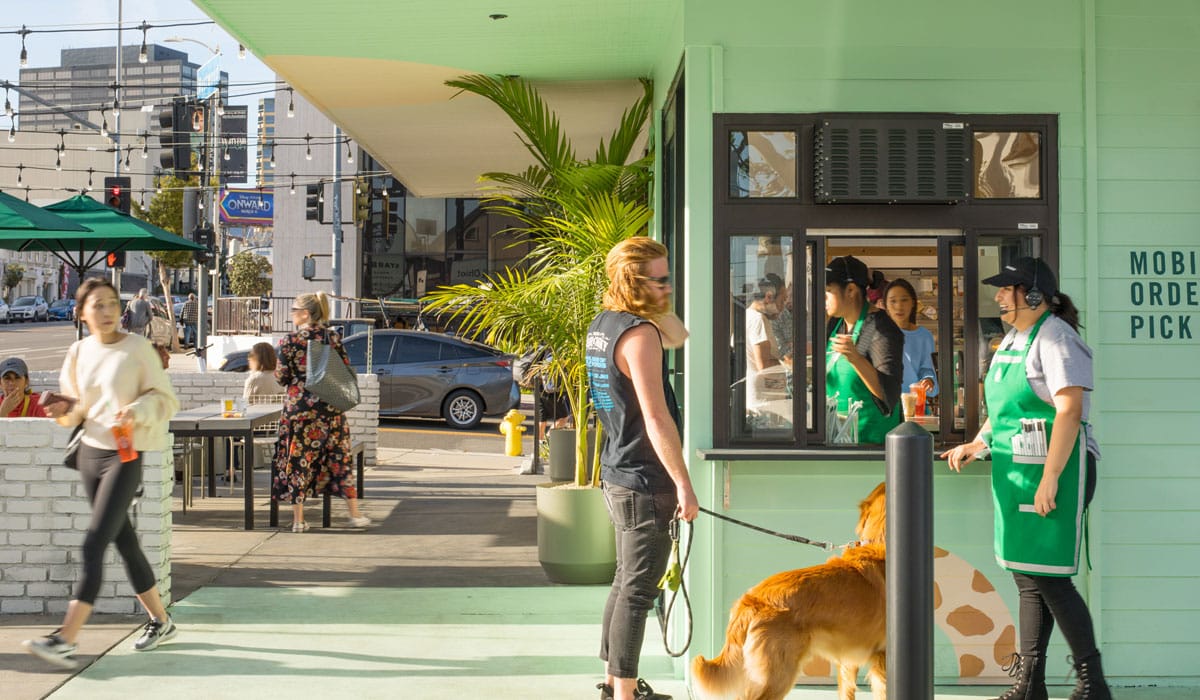The online food delivery segment is on path to reach $136,431 (in millions) this year, according to data collected by Statista. And, while customers have largely moved to online ordering due to the pandemic, kiosks and drive-thru are still a popular mode of ordering.
As lockdown restrictions were lifted, In-store dining began gaining traction, albeit cautiously, with quick-service restaurants investing in health and safety for customers and employees. Most brands are currently operating at 50 percent dine-in capacity with various safety protocols in place like strategically placed sanitizers, mask-only service, demarcated social distancing and investment in customer-facing technology; Kiosks, voice-ordering, drive-in/drive-thru, contactless mobile ordering are thriving.
A survey by SmartBrief indicated that 45 percent of customers actually miss dining out and so it becomes essential for restaurants to upgrade safety protocols in order to drive in-restaurant business. Mega-chains like Starbucks, McDonald’s, and Chipotle have utilized digitally enabled systems to drive in-restaurant traffic with contactless fixtures such as motion sensors, digital menus, kiosks, mobile ordering and payment, and drive-thru.
Standing Out With Technology
With over 200,000 businesses serving approximately 50 million consumers, one can say competition is rife in the quick-service industry and personalization could be made a key differentiator for brands if they get it right. According to AdTheorant’s Dining Trends Report, 71 percent of consumers say that customized adverts gives them a more favorable opinion about the brand.
Whether it’s McDonald’s and Wendy’s using crowd-sourcing to test their burgers, or White Castle providing convenience with digital kiosks, AI has been driving customer engagement for a while now. Even Domino’s has experienced digital success with over 50 percent of their clientele ordering via the mobile app. Starbucks is another success story altogether.
Let’s see how Starbucks gets it done
At the touch of their finger-tips, Starbucks customers can pre-order, pay and pick-up their order without wasting time in a queue using a mobile app. A real-time, personalization engine predicts order preferences, matches cross-selling opportunities and makes special offers on the spot for individual customers, just in case they want to change or upgrade their order.
They also have a rewards point system, which ensures freebies like drinks. It works similar to how frequent-flyer programs work in the airline industry—customers are given freebies, upgrades and more after every level of spend.
The app is a big success for Starbucks. It is backed by popular vote of their loyal patrons and even outshines Apple Pay and Google Pay in the U.S.
Streamlining Online and Offline Services
The underlying challenge is in providing a connected experience across channels—in-restaurant, drive-thru, website, mobile and social. Blurring the gap between offline and online channels can build a rewarding omnichannel experience for the customer, and should be part of the overall algorithmic marketing strategy of a brand.
For quick-serves to get a deep understanding of customer tastes, preferences and behavior, they need to have a unified view of customers across all touchpoints.
Today’s new age digital consumer interacts with the business across many touchpoints (social media, website, digital menu, drive-thru, mobile apps, etc.) and with AI it can be easier to capture and measure the dynamics of customers across these touchpoints in order to orchestrate highly contextualized, personalized promotions that drive engagement and sales.
Quick-Serves Across the Board are Getting Personal
McDonald’s in 2019 rolled out personalized menus at 700 drive-thru locations in the United States. Overtime they intend to use the data to leverage loyalty and reward programs to upsell to customers.
Starbucks is enjoying customer loyalty via their successful app that provides personalized rewards for its members. Although still in a nascent stage, drive-thru has tremendous potential for customization via license plate recognition software—Dunkin’ Donuts and Starbucks seem to have an edge with massive investment in this space.
Tracking Potential Customers
A recent finding revealed that 69 percent of marketers intend to use location based intelligence to understand competitor interaction, customer behavior and more. Marketers intend to use this data in sync with loyalty programs to drive new customers.
Location based intelligence has already been on the move. Burger King was one of the first to roll it out in a promotional stunt to drive customers away from McDonald’s. They achieved this via their mobile BK app that offered consumers burgers for a penny when they were within 600 feet of rivals McDonald’s. AI algorithms enable customer journey marketing from acquisition, growth to retention.
Future-proofing the Quick-Service Segment through Technology
A 2019 publication by AdTheorent reported that 71 percent of consumers are open to restaurants incorporating AI to enhance customer satisfaction. Despite this, more than two-thirds of surveyed restaurateurs don’t use AI reported another study by NCR.
Seamless experience across online and offline platforms is a customer expectation and AI is the key tool to enabling a connected experience for quick-service restaurants. Businesses are also realizing the tremendous potential of technology to maximize ROI in an industry with small profit margins and high operational costs.
Sameer Narula is the Chief Product Officer at Manthan responsible for product vision, adoption, and revenue growth across product lines and driving the next generation of industry-leading products, technology, and innovation. He has been part of the technology industry and its exciting journey for over two decades—as a technologist, strategy advisor, industry executive, and entrepreneur; with expertise in handling complex technology-led business applications – from concept to delivery for mid to large organizations. He also has significant experience of working with niche/start-up technology companies in founding or early-stage core team member capacity. He has worked and lived across India, and U.S.











